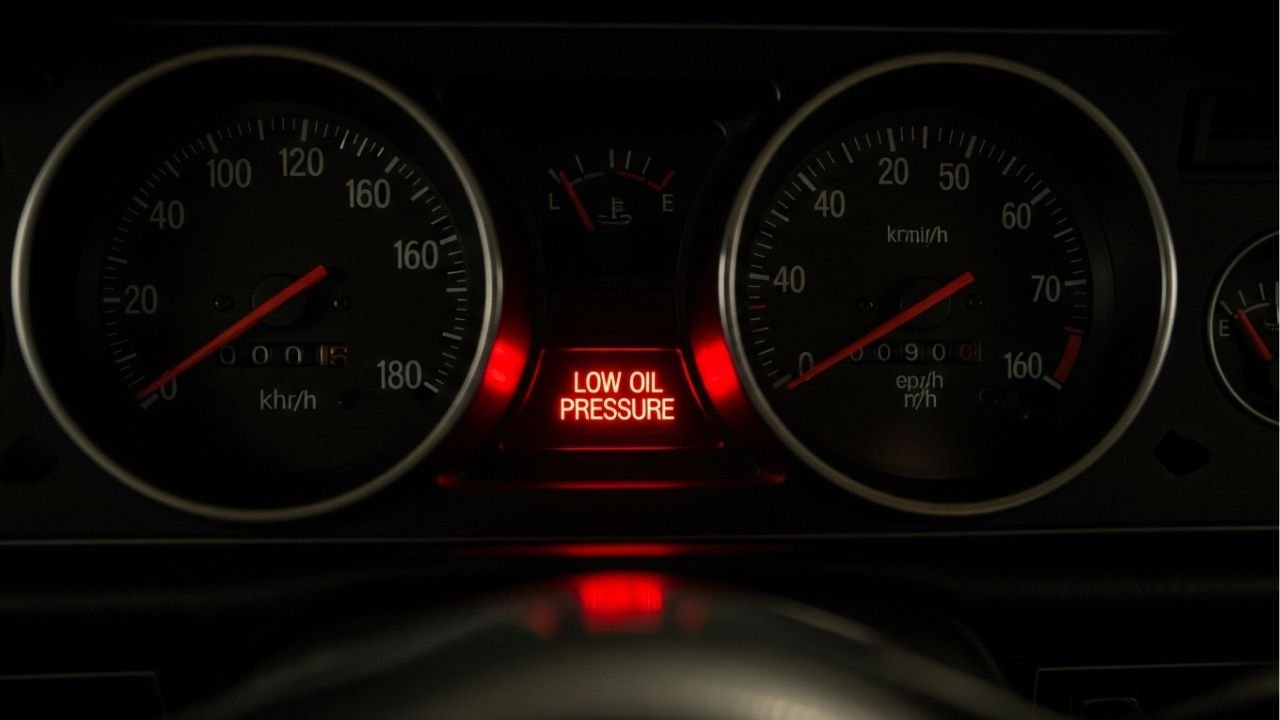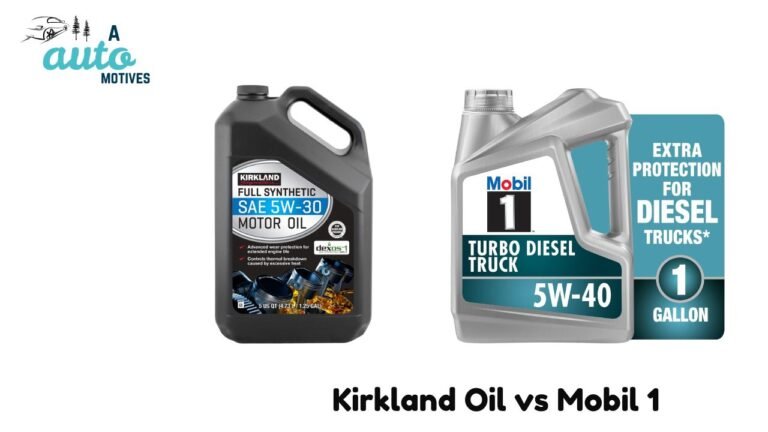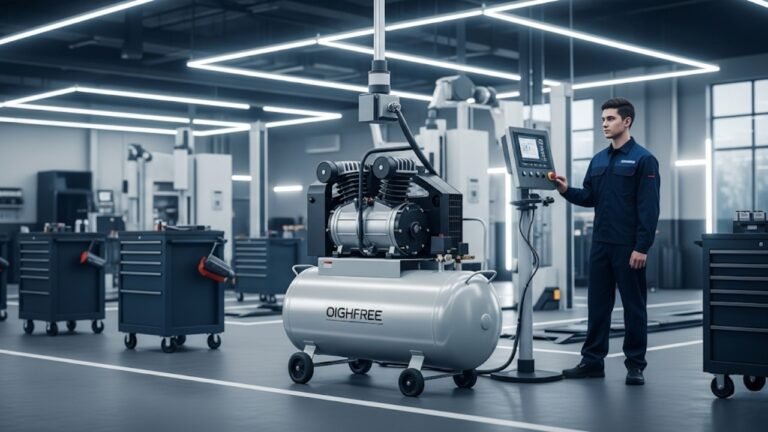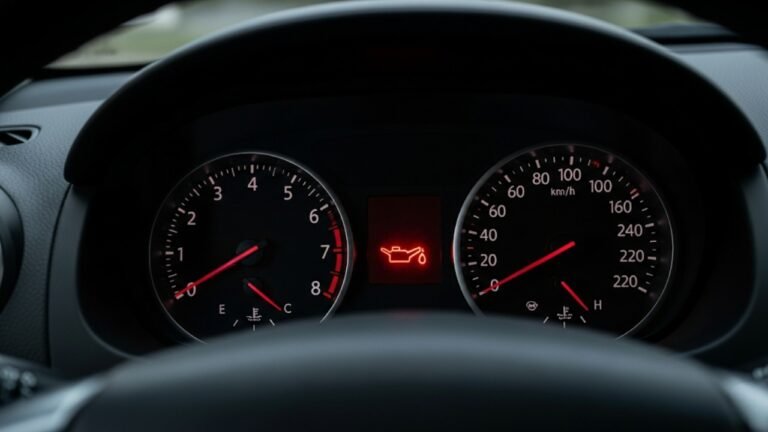Why Does My Car Say Low Oil Pressure?

You’re driving along, music playing, coffee in hand, when suddenly—ding! That dreaded light appears on your dashboard: “Low Oil Pressure.” Your heart skips a beat. You know this isn’t a warning to ignore, but what does it really mean?
Many car owners have faced this issue and asked themselves: “Why does my car say low oil pressure?” It’s a scary notification, but don’t worry. In this article, I’ll walk you through everything—from what this warning truly means to what causes it and how to fix it. I’ll share stories, insights, and hard-learned lessons so you can not only understand this problem but prevent it from damaging your car in the future.
Let’s treat this like a casual chat over tea—but with serious knowledge baked in.
What Does “Low Oil Pressure” Actually Mean?

When your car says “low oil pressure,” it’s not just being dramatic—it’s warning you that your engine isn’t getting the oil flow it needs. If ignored, this can lead to overheating, engine wear, or complete failure.
Quick Snapshot of What Low Oil Pressure Can Lead To:
| Problem | Consequence |
|---|---|
| Engine overheating | Can warp parts or cause breakdown |
| Inadequate lubrication | Friction damage, wear and tear |
| Oil starvation | Engine seizure in worst cases |
| Warning light persists | Stress and costly repairs |
This is one of those things where early action saves thousands.
Why Does My Car Say Low Oil Pressure? 10 Honest Reasons
Let’s break down the real-life causes of this dreaded dashboard alert. Some are mechanical, some are just plain human error (been there, done that). Either way, you need to know them all.
1. Low Engine Oil Level
Yes, this is the most common—and obvious—culprit. If there’s not enough oil, there’s not enough pressure. Your oil pump can’t circulate air, only oil.
I remember one winter morning, I checked my dipstick and it was bone dry. Turns out I’d gone 8,000+ km without a change. A rookie mistake, but a memorable one. Don’t wait until the light tells you; check oil levels every few weeks.
What to do:
-
Pull over and turn off the engine.
-
Let the car cool.
-
Check the oil dipstick.
-
Add the recommended oil type if it’s low.
2. Oil Pump Failure
The oil pump is the heart of your engine’s lubrication system. If it’s faulty, it won’t push oil through the engine, causing low pressure.
It’s not super common, but it happens, especially in older cars or after hitting debris. It’s like your body trying to function without a heartbeat—scary, right?
Signs of a failing pump:
-
Sudden drop in oil pressure
-
Ticking or knocking noises
-
Rising engine temperature
Fix: Get it checked and replaced by a trusted mechanic.
3. Dirty or Old Oil
Dirty oil thickens over time. It clogs passages and reduces flow, like trying to drink a milkshake through a coffee straw. Your engine needs clean oil to function properly.
You might be thinking, “But I just changed it a few months ago!”—yet if your oil change intervals are too long, especially under harsh driving conditions (heat, dust, stop-and-go), it could still go bad early.
Tip: Stick to the interval in your owner’s manual—usually every 5,000–8,000 km.
4. Clogged Oil Filter
An oil filter traps sludge, metal bits, and other impurities. Over time, if not changed, it clogs. And when that happens, oil can’t pass through easily—hence the drop in oil pressure.
I once bought a second-hand car where the filter hadn’t been changed in forever. The engine barely survived a week. Don’t make that mistake.
Pro Tip: Change the oil filter with every oil change.
5. Faulty Oil Pressure Sensor
Let’s be honest: sometimes, it’s not the oil—it’s the sensor. A bad sensor can falsely trigger the low oil pressure light, even if everything’s fine.
You might feel panic for no reason. That’s why it’s crucial to diagnose before replacing parts. A mechanic can test it quickly.
Clue: If there’s no performance issue or noise, but the light is on, the sensor might be to blame.
6. Worn Engine Bearings
This one’s deeper under the hood. Bearings help reduce friction between moving parts. If they wear out, oil slips through too quickly, lowering pressure.
This usually happens with high-mileage vehicles. You’ll often hear knocking or rattling noises if this is the case.
Reality check: This is a costly repair. If your car is older, it might be time to assess whether it’s worth fixing or upgrading.
7. Oil Viscosity Too Low or High
Viscosity = oil thickness. If your oil is too thin (low viscosity), especially in hot weather, it flows too fast, reducing pressure. If too thick, it may not flow at all in cold temps.
Ever tried pouring honey in winter? It barely moves. That’s what thick oil does in cold engines.
Always use the recommended oil grade for your engine. It’s not marketing—it’s science.
8. Oil Leak
Leaks = lower volume = lower pressure. Simple.
Check under your car for fresh oil spots. If you see them, don’t delay. Leaks can happen from the oil pan, valve seals, or gaskets.
Pro Tip: If the leak is slow, you might top off oil temporarily—but it’s just a Band-Aid. Get it repaired ASAP.
9. Engine Overheating
Heat thins out oil, reducing its pressure and effectiveness. Overheating engines often suffer low oil pressure, especially in summer traffic.
If your temperature gauge is rising with that oil warning light, pull over. Don’t take risks.
10. Using the Wrong Oil Type
You’d be surprised how many people use random oils, thinking “It’s just oil, right?” Wrong.
Every engine has a preferred type—conventional, synthetic, or a specific viscosity like 5W-30. Using the wrong kind can reduce pressure and increase wear.
Always double-check the oil spec in your manual or on the cap. Better safe than sorry.
How to Respond When That Light Comes On
Immediate Actions:
-
Pull over safely and shut off the engine.
-
Wait a few minutes, then check the oil level.
-
Top up oil if it’s low. Use the correct type.
-
Restart and observe. If the light stays on, don’t drive. Tow it to a mechanic.
Driving with low oil pressure is like running a marathon with no water—it won’t end well.
How to Prevent Low Oil Pressure: Be Proactive, Not Reactive
Preventing this issue isn’t rocket science. It just takes a bit of attention and consistency. Most people only think about their car when something goes wrong. Let’s flip that script.
Simple Habits That Can Save Your Engine:
-
Check your oil level monthly. It takes just 2 minutes.
-
Stick to the oil change schedule. Don’t wait until you’re 2,000 km overdue.
-
Use the right oil grade. Double-check your car manual.
-
Replace the oil filter with every oil change.
-
Get your car diagnosed immediately if warning lights show.
-
Inspect for leaks under the car regularly.
-
Don’t skip servicing. Even if the car seems “fine.”
Bonus Tip:
If you drive short distances frequently, your oil may degrade faster than expected. Why? Because the engine doesn’t get hot enough to burn off moisture and fuel contamination. In that case, consider more frequent oil changes.
The Emotional Cost: A Lesson from Real Life
A friend of mine, Samiul, was driving from Dhaka to Sylhet. Halfway into the journey, the low oil pressure light popped up. He ignored it, thinking it was just a sensor glitch. 20 minutes later—boom. The engine seized on a busy road near Habiganj. Not only did he miss a family event, but the repair bill was north of 1.2 lakh taka.
He later admitted: “I just didn’t think that little light meant the whole engine could fail.”
So yes, it’s that serious.
Common Misconceptions About Low Oil Pressure
Let’s bust a few myths that might be quietly eating away at your engine’s health.
-
Myth 1: “If there’s oil in the car, I’m fine.”
Truth: Quantity ≠ Quality. Dirty oil or wrong viscosity can still cause low pressure. -
Myth 2: “Sensors are always faulty.”
Truth: They sometimes are—but not always. Ignore them at your peril. -
Myth 3: “You can drive a little with low oil pressure.”
Truth: That “little” drive could cost you a full engine rebuild.
FAQs: Answering Your Burning Questions
Q1: Can I drive with a low oil pressure warning?
No. You risk severe engine damage. Pull over, check the oil level, and call for help if needed.
Q2: Is low oil pressure always caused by low oil level?
Not always. It can also be caused by pump failure, clogged filters, worn bearings, or the wrong oil type.
Q3: How much does it cost to fix low oil pressure?
It depends. A simple oil change may cost a few thousand taka. But major repairs like oil pump replacement or bearing repair can exceed 50,000–100,000+ taka.
Q4: What oil is best for maintaining oil pressure?
Use the manufacturer-recommended oil grade. Synthetic oils like 5W-30 or 10W-40 are common, but always check your manual.
Q5: Can weather affect oil pressure?
Yes! In very cold or very hot weather, oil viscosity changes. That’s why seasonal oil recommendations exist.
Q6: Does idling affect oil pressure?
Yes. Long periods of idling can reduce oil pressure, especially in older engines.
Q7: What’s the difference between low oil level and low oil pressure?
Oil level is the quantity in the engine. Oil pressure is how well that oil is being circulated.
Q8: Can a bad oil pressure sensor cause engine problems?
No, the sensor itself won’t harm the engine—but ignoring the light it triggers can lead to disaster.
Checklist: What to Do When You See “Low Oil Pressure”
| Action | Importance |
|---|---|
| Pull over safely | Critical |
| Turn off the engine | Critical |
| Wait for engine to cool | Necessary |
| Check oil level with dipstick | Essential |
| Add oil if low | Quick fix |
| Restart car and observe warning light | Diagnostic step |
| Visit mechanic if light stays on | Must-do |
Final Thoughts: A Little Light That Means a Lot
The “low oil pressure” light is like your car whispering: “Help me.” Ignore it, and that whisper turns into a scream. Listen to it, and you save yourself thousands of taka and months of headaches.
I always say—cars are like relationships. If you give them a little regular care and attention, they stay healthy and faithful. But if you neglect the signs, you might face a breakdown—literally and emotionally.
So, next time someone asks you, “Why does my car say low oil pressure?”—you won’t just give an answer. You’ll tell a story. A story about being smarter, faster, and more prepared than the light on your dashboard.






